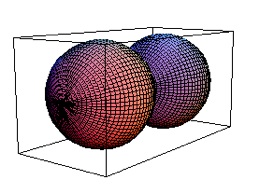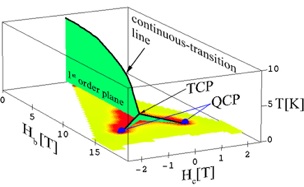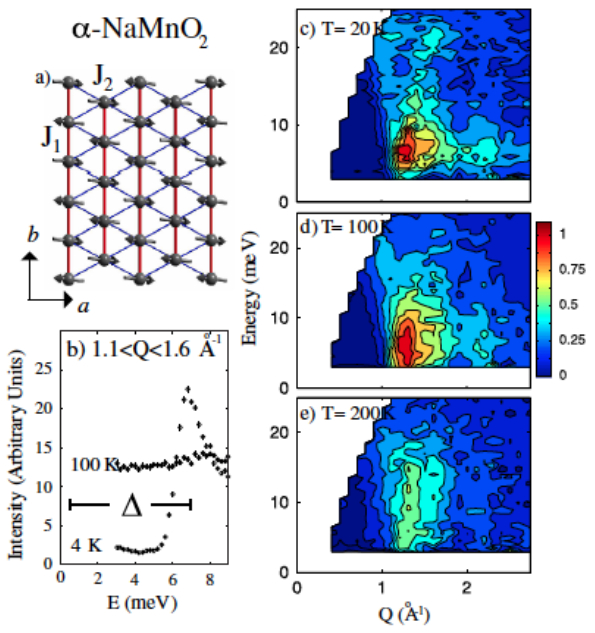
Standard superconductivity is suppressed by magnetic fields. Surprisingly in URhGe, superconductivity appears under high magnetic field in a ferromagnetic state. This suggests that the electrons are not paired in the usual way, but instead are paired with the electronic spins pointing in the same direction. This combined with the crystal symmetry implies that the superconducting gap must have a dumb-bell dependence on direction (figure) in contrast to the almost isotropic angular dependence characteristic of conventional superconductivity. This more complex form of superconductivity has interesting properties that we are investigating and could lead to new applications.

Conventional phase transitions are driven by thermal fluctuations resulting in a particular symmetry being broken. Another class of phase transitions exists at T=0 where the transition is driven by quantum fluctuations. These phase transitions are reached and tuned using an external parameter such as magnetic field and pressure. Our group has a large effort in the development of pressure cells to access these new phase transitions.

Topological defects represent a localized region where the otherwise uniform order parameter approaches zero. While the introduction of defects typically degrades materials, there are several notable examples of systems where defects enhance the properties. One example is the case of disordered piezoelectrics. Piezoelectric materials are systems where the shape and strain in the compound can be controlled directly through the application of an electric field. These systems are often used for sound detection (such as sonar) or even microscopy where small controlled displacements can be performed. In some piezoelectrics (containing lead) the introduction of defects through chemical substitution can enhance the electromechanical coupling several orders of magnitude improving the materials properties. Understanding the role of defects and the ability to control them can be an important factor in controlling or engineering material properties. The group is involved in the study of topological defects in a number of systems including frustrated magnets, ferroelectrics and piezoelectrics, and strongly correlated electron systems.